|
There were many composite sketches done of a “suspicious person” in connection with the crime spree of the East Area Rapist, but lack of contemporary confidence in them is reflected by the fact that no composite was released to the public until May 19, 1977, one month short of a year since the Night Predator had begun his attacks. This is explained by the fact that no one had truly seen the EAR’s face in action except once. This was on March 18, 1977. Victim No. 15 in Rancho Cordova got a brief glimpse of the villain’s face. He had pulled his balaclava’s visor (a single slit in the mask for the eyes) down under his chin in order to breathe and enjoy himself while forcing the victim to perform certain acts on him. She peered between the slit in the blindfold and saw his face. This is that composite:
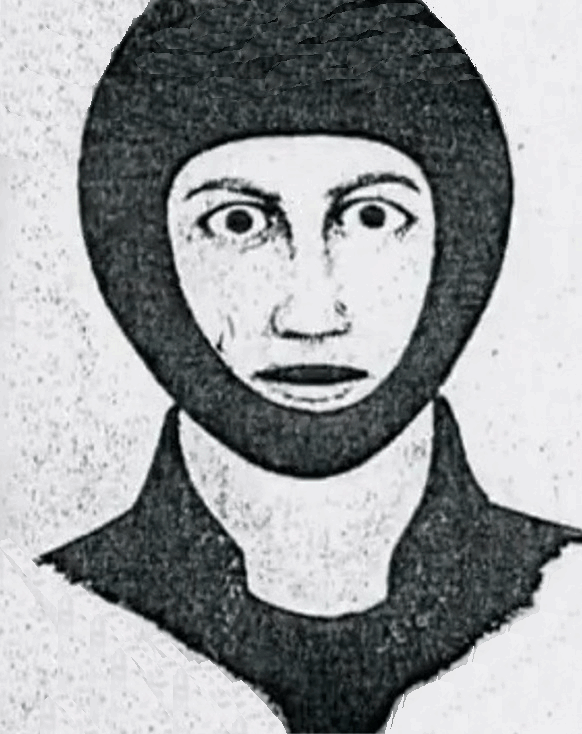
It is not very detailed, of course. In fact, it is a one dimensional cartoon image. It is a sketch done from the impression of a victim in a difficult position. It was assisted by hypnosis. Presumably, the basics are there of what she saw— thin nose, wide eyes, thin brows, small mouth, young face. And, from the looks of it, short hair (none shows under the ski mask). It is not very clear if the nose is pug or Roman.
A month later on April 15, 1977, EAR struck again. Victim 17 had been washing her car in the driveway earlier and had paid attention to a car cruising by and to the young man driving. After the attack she believed it could have been EAR. She too was taken to Placerville for hypnosis. She gave a description of the man. She personally affirmed to me (recently) that the man had a round face. This seems evident in the sketch above as well.
These two encounters no doubt deeply influenced the appearance of the sketch below. This is the sketch released to the public, the first image Sacramento had of the unstoppable suburban terrorist— the East Area Rapist. It was released on May 19, 1977, as the panic in Sacramento was increasing.
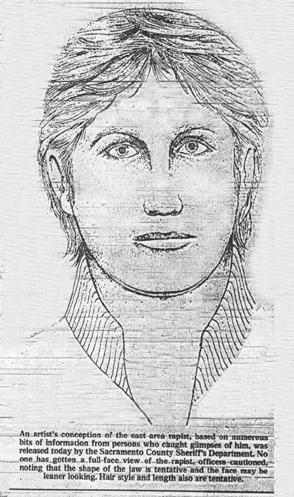
The caption reads: “An artist’s conception of the east area rapist, based on numerous bits of information from persons who caught glimpses of him, was released today by the Sacramento County Sheriff’s Department. No one has gotten a full face view of the rapist, officers cautioned, noting that the shape of the jaw is tentative and the face may be leaner looking. Hair style and length are also tentative.”
Long after-the-fact, this became a very denigrated sketch. Ironically, it is the only one that was ever released during his crime spree in the Sacramento area. (Stockton would release others).
As time went by the composite could not be fully amended with the features provided by more “glimpses” of him because no one was truly certain if these “glimpses” were really of him or of someone else who was just incidentally in the general neighborhood. The same can be said of those “glimpses” of him that contributed to the sketch above. Again, his face was seen only once in perpetration, and this yielded a cartoon image.
The tentative attitude of the Sheriffs was obviously warranted. But how much should this composite be adjusted to make it more accurate? A less rounded face equals what? Hairstyle doesn’t help. A change of hairstyle is rather easy. The EAR could even have gotten a haircut after this was released if the composite was that accurate as regards his hair. Surely he knew it had been released. By the summer of 1977 he had 22 victims. He knew he was the Number One most hunted criminal in the area.
The caption also implicitly reflects the fact that there were previous sketches of “suspicious persons” who must have had different features. With the increasing popularity on the internet of this unsolved crime spree many of these formerly restricted composites have been released, many of them holding features that are radically different to each other. None, however, are truly verified to have been EAR. It remains a fact that EAR’s face was never clearly seen in action except once. And “clearly” may really be the wrong word to use.
At some point in time a composite had been made amending the above two sketches in an attempt to create a believable looking version. This is that sketch:
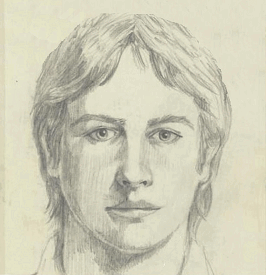
It is a far more humanized composite, but the sources for the amendments we do not know, and there should be some doubt at present how reliable they are since EAR’s face was only seen once in situ for certain anyway. The hair is clearly taken from the publicly released May 19, 1977, sketch. However, the face is not too similar to that sketch. The upper lip is quite unnaturally large. The eyes are more believable. The nose seems more pointed than pug. Nevertheless it is supposed to represent a far more accurate appearance for the same face in the first sketch (based on Victim 15’s eyewitness account). Based on this belief, this composite was used to recreate the first sketch by drawing a balaclava around it and adjusting its mouth to the open position.
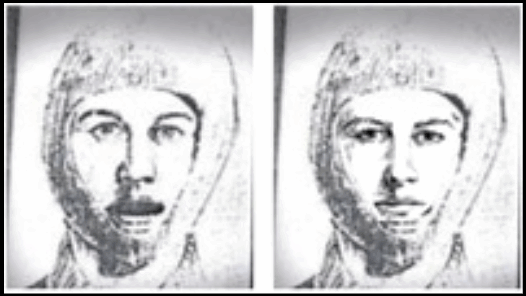
This sketch has become synonymous with the EAR. But is it? In order to sort out just where some of these added features are coming from we must now look at the accumulation of composites and sketches. With some analysis it is possible to put back a chronology to the sketches and composites.
It is often circulated today that the amended composite above is based on the sketch of the Ripon Court Shooter made by Rod Miller, the victim. However, the question is: which composite is the Ripon Court shooter? Below, right, this composite is the one often said to represent the shooter. This is asserted by the Sacramento Sheriff Department on their website. Yet it is dated in the lower left hand corner. A large blowup confirms it was dated February 11, 1977, about a week before the Ripon Court shooting took place. If it was made in response to an EAR attack, it must represent a suspicious person seen in the vicinity of Victim 11, 12 or, most likely, Victim 13’s neighborhood, where EAR struck on January 19, January 24, and February 7, 1977, respectively.
 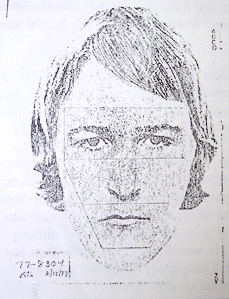
The significant amended composite (left) compared to the identikit composite (right) attributed to the “Ripon Court suspect.” Rod Miller has asserted that the amended composite (left) is based on his account. However, if this is true than we must recall he was not in a position due to his wounds to give his description for sometime. This probably explains why the sketch did not influence the released composite in May 1977.
The Ripon Court suspect identikit (right) is given a much longer face and thin, aquiline nose. The two, when compared, obviously do not look similar nor does one look influenced by the other. The one on the left was published as early as September 1977 in Stockton, so it was made sometime before that but not in time to influence the May 19, 1977, composite.
The original composite gives us a rounder face than the one on the right above. This rounder face is seen in the composite which purports to be of the “fence jumper” seen in La Riviera in the week before EAR’s attack on Victim No. 11. It is dated (once again only by a redactor) to January 22, 1977.
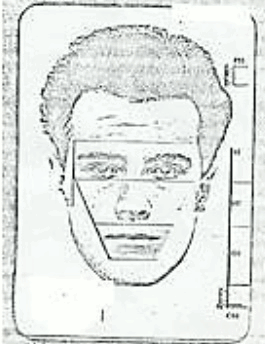
As it can be seen, the lips remain thinner and the nose is much wider compared to the sketch based on Victim 15’s eyewitness account. If this is EAR then he did have shorter hair. However, if that is the case then the two composites above purporting to be the Ripon Court Shooter cannot be EAR, since he could not have grown his hair out in only a few weeks between being seen in La Riviera on January 22 and then Ripon Court on the 16th of February.
The uncertainty about what sketch represents the Ripon Court Shooter is compounded when sheriff Lt. Richard Shelby describes the Ripon Court Shooter in detail in his book (Hunting a Psychopath), saying he was wearing a dark watch cap and a dark windbreaker. This obviously doesn’t match the sketches purporting to be the Ripon Court Shooter. It may be Shelby’s mistake. However, yet another sketch (fortunately it retains its date) dated to May 17, 1977, shows a “prowler” near American River College on College View Way, that actually matches Shelby’s description of the Ripon Court Shooter.
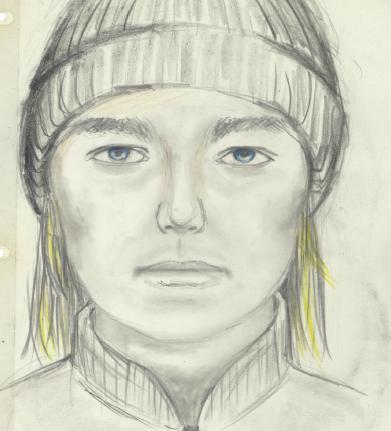
It isn’t the best sketch, but the hair is longer again, the lips thinner, the face rounder. It could represent EAR in a jogging disguise. This is near where he would strike on January 28, 1978 (Victims 29/30), and he simply may have been prowling the area long in advance. A similar jogger was reported around other attack locations, including one in Contra Costa County, where EAR began to strike later in his crime spree. A “suspicious jogger” reported in far flung jurisdictions is a consistency that is not likely to be coincidental, meaning this sketch above could be EAR. He sometimes prowled months in advance.
The hair is a problem, though it could imply he let it grow out since January. The watch cap may have been a devise to keep in place a wig as a part of his disguise, but it may just mean the La Riviera composite of January 22, 1977, is of someone else, and EAR had longish hair the whole time. However, none appears in the sketch based on Victim 15’s eyewitness account. Conversely, it could be the jogger was just a jogger on College View Way.
The earliest composite purporting to be of a “suspicious person” in a general area where EAR struck is, according to the unseen hand of the redactor, dated to November 8, 1976.
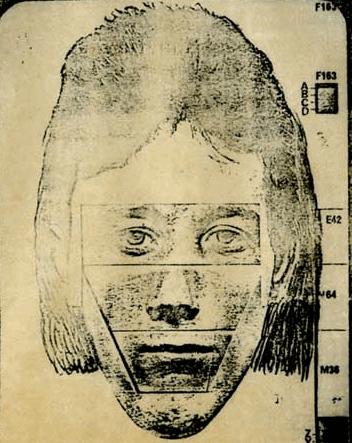 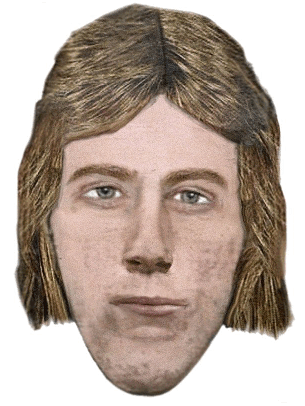
Robert Neville did a commendable job of turning the composite into a human looking portrait. This face is radically different to the sketch based on the eyewitness account of Victim 15. The identikit composite above shows a young man with a long face, not a round face. He was supposedly seen on Bourbon Drive, which is in the Del Campo Park area. Generally speaking this is the same area as Heathcliff where a “suspicious person” was seen the day or so before the attack on Victim 13 there. Victim 9 was struck on November 10, 1976, at quite a distance from Del Campo Park and Bourbon Drive, so that the claim the sketch was completed two days before seems to connect this “suspicious person” to no EAR crime.
The following composite purports to be dated to March 8, 1977, and shows features similar to the “watch cap” composite above. This date (and the location near Thornwood) connect this “suspicious person” to Attack No. 14, and hence very close in time to the significant sketch made on the eyewitness account of Victim 15. We come back to a rounder face and longer hair, parted to the middle. The sketch must have greatly influenced the style of hair in the May 1977 published composite.
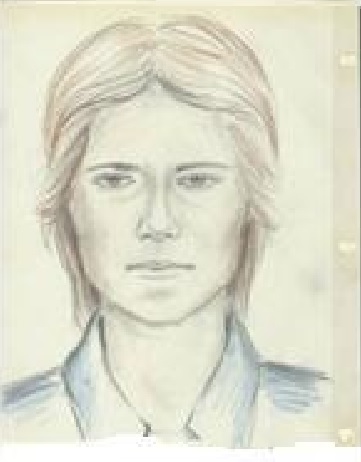
This now brings us back to May 1977 and the release of the sheriff composite based on the anodyne looks given to EAR by Victim 15 in Rancho Cordova (March 18, 1977), the only time the face of the East Area Rapist was seen for certain. Of these pre-May composites and sketches, the most radical are the long faces, one attributed to the Ripon court Shooter and the other a young man in the Del Campo Park area associated with no attack.
By the summer of 1977 we have only one image of EAR— the released composite, with its attending caption cautioning us that much could be different about the face. But the question is, how radical could these different features be? The jaw if not so round doesn’t mean it would be a long, narrow face. Nothing indicates the EAR had a fat upper lip. Since EAR was looking down at the victim when she saw him, it would seem the rounder face would simply be a bit tighter when seen straight-on, as in the May (Thornwood) composite above.
But it is a fact that during the same period these above composites and sketches were being made that neighborhood witnesses and victims alike reported someone who was shorter, with dark hair. He was between 5’2” and 5’6” tall. His hair was darker, a dark brown. He seemed older, between 30 and 35 years old. Which one was EAR? The shorter, darker older man or the younger, blonde man? The above sketches are of a young man seen in a neighborhood that was soon attacked by EAR. Although they are those that have been circulated, they are only a paltry example of the sketches retained and still not released by the authorities. For whatever reasons, they are the ones that got out and made an impression on the web. But this should not be taken as an endorsement that they are significant to the actual features of EAR.
It is also a fact that EAR went out of his way to make himself seem very young, indicating perhaps he was quite a bit older. With Victim No. 2, he lied and said he had seen her at the Mira Loma high school’s Junior Prom. With Victim No. 9, he said: “I have to wait for my parents to leave so I can go home.”
At the end of summer 1977, EAR struck in Stockton (No. 23) This gives us a full body sketch of him as seen by the victim’s 6 year old little girl. This does not help with his face since his balaclava remained shielding it, but it gives us a few more clues.
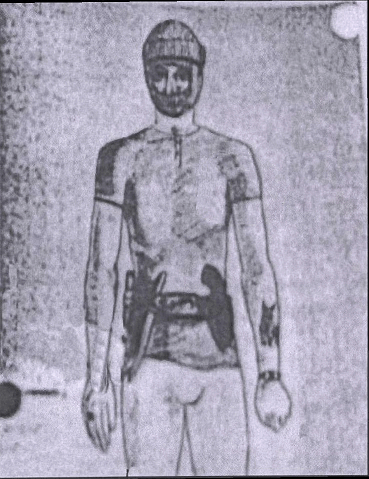
The sketch above reflects the little girl’s recollection. She saw him in the darkened hallway. He was nude from the waist down. He wore a tight balaclava (like with Victim 15, March 18, 1977), with a dark watch cap on top of this balaclava (like the jogger in May of 1977 on College View Way). He seems to have short hair here. He wore a belt with gun on one side and a knife in a sheath on the other side. Witness wasn’t sure if the gun was on the left side. Under hypnosis she recalled a tattoo on the left forearm (though it could have been the right) that looked like a bull. The belt buckle was thick, metal, two revolvers facing each other (apparently).
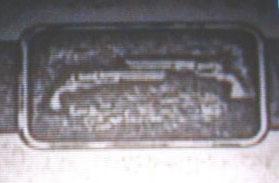
The next composite is one of the most famous, and one which this present writer has previously used as significant. However, because of the excessively narrow chin there are reasons to round it out a bit more. It dates to October 1977, and is therefore the closest done in proximity to the above full body sketch which indicated EAR had short hair. It is well done, and it has come to represent EAR more than any other. It reflects a person of interest seen in relation to the attack on No. 24 in La Riviera. This person was seen on Point Reyes Way, a street behind the victim’s duplex. If EAR, it indicates he got a haircut since the previous May . . .if those longer hair composites indeed reflect EAR. He could have gotten the haircut in response to the released composite which showed longer hair parted in the middle. (Or he may have had shorter hair the whole time.) The sketch also makes this person look quite young.
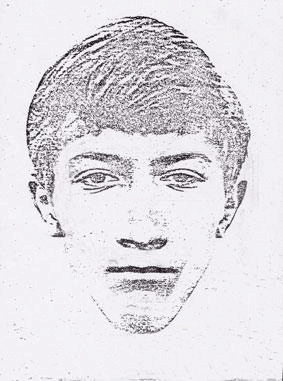 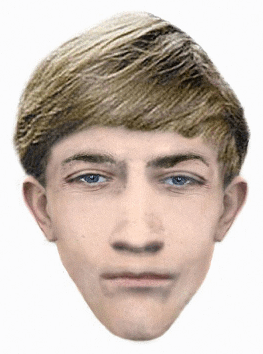
The next composites have gone through a tortured past before emerging as authoritative as it relates to EAR. It represents the suspected assailant seen soon after the Maggiore Double Murders on February 2, 1978. The suspect was first seen wearing a ski mask after he fled from the shooting. Then after he jumped onto Capitales he took it off and was then later seen. The result is the sketch on the right. The circumstances strongly suggest this is EAR. But since the witness didn’t come forward for a month or more the sketch is done based on her memory. There is therefore some leeway to interpret the features and even the part of the hair.
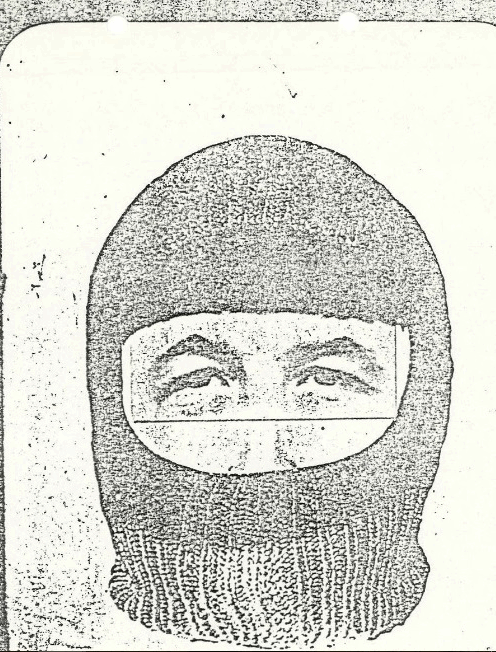 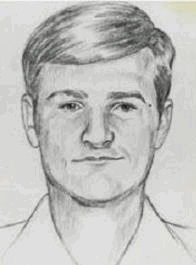
The composite below, left, supposedly represents another version of the “fence jumper” of January 1977 in La Riviera.
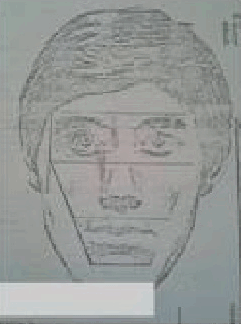 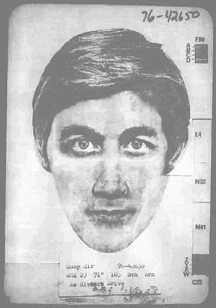
The identikit, right, is of someone who seemed suspicious and was credited to “La Riviera Drive” date unknown. Both preserve a longer face, hair parted on the left. Is one of them EAR?
There isn’t much from the Contra Costa County area that has been released, but one sketch purporting to be of a “suspicious person” seen in San Ramon in 1979 proves interesting. It gives us the dark hair reported by a number of witnesses and a bit rounder face but still similar to the long face sketches in Sacramento, especially La Riviera October 1977. It also gives us the features of the older EAR in his 30s.
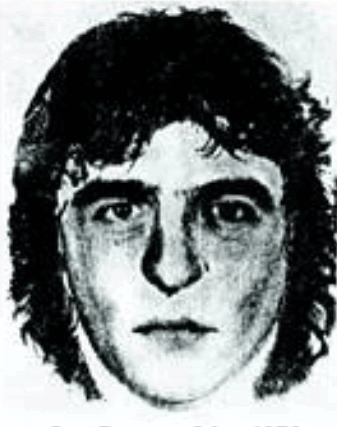
Little significant in the way of sketches was hereafter released. A famous one is simply the EAR in a mask, as he was seen at his botched and final attack in northern California, at Danville (Victim 48) in July 1979. The sketch below reflects some of Victim 40’s description. Eyes are close together, the face is definitely longer, eyes aren’t too narrow.
The attack in Danville ended the known crime spree of the EAR (at that time). He would turn murderer in southern California as the Original Night Stalker, but no composites have been released of any suspicious persons seen in those neighborhoods.
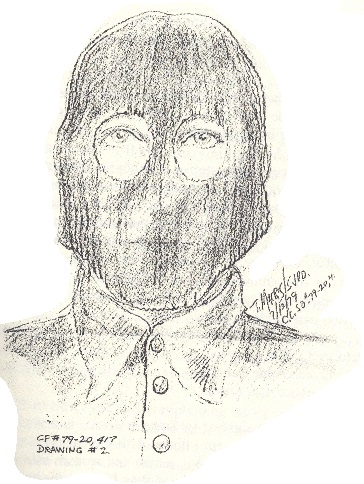
It is appropriate that this sketch completes the compilation here, for this is really EAR’s face— a ski mask. On the whole, EAR was really never seen. Some “suspicious” men were seen “prowling” or they were just men who had not been seen before in the neighborhoods. Some were young. Some seemed older. Once again, and finally, EAR was seen full face only once, in a cutout of the balaclava and his features were recalled with the help of hypnosis. Taken together, EAR’s age varied, so did his height and the color of his hair.
So where does the burden of evidence point us? In essence it comes down to the final composites above. Averaging between them, what do we have?
Phenomenally, this is all that comes down to us of The Night Predator, the man who savagely raped about 50 women, terrorized many couples and communities, and eventually murdered 10 people over a 10 year period. He was truly a careful terrorist.
|